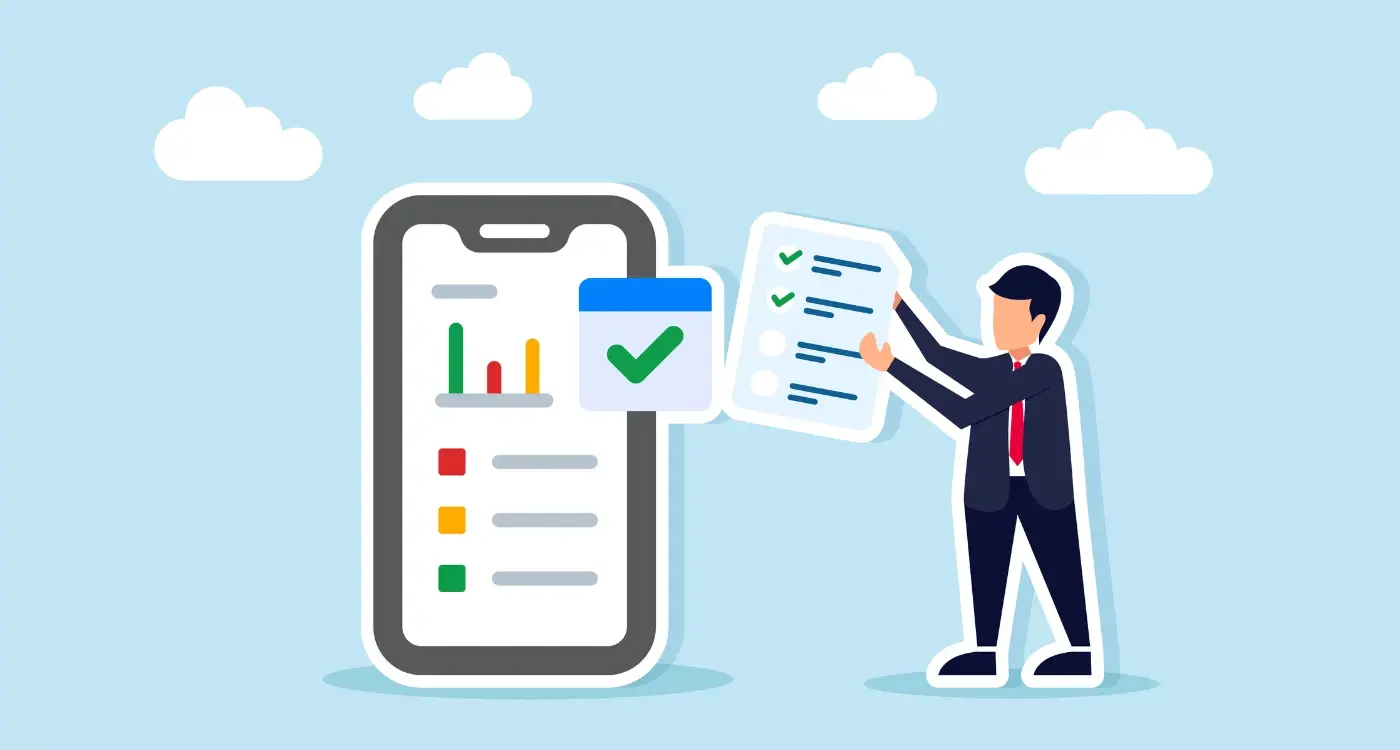What Research Methods Work Best for App Planning?
Why do some apps take off like wildfire whilst others crash and burn despite looking identical on the surface? After building dozens of mobile apps—from simple utility tools to complex marketplace platforms—I can tell you the difference usually comes down to one thing: the quality of research done before writing a single line of code.
Most people think app development starts with design or coding. Wrong. It starts with asking the right questions and finding the right answers. I've watched brilliant developers create technically perfect apps that nobody wanted, and I've seen basic apps with solid research behind them generate millions in revenue. The difference? One group guessed; the other group knew.
The mobile app world has become ruthless over the years. With over 5 million apps across the major app stores, users have endless choices—and they're not shy about deleting apps that don't immediately prove their worth. The average app loses 77% of its users within the first three days after installation. That's not a tech problem; its a research problem.
Proper research doesn't guarantee success, but skipping it almost guarantees failure
The good news? Most app creators still wing it when it comes to research, which means doing it properly gives you a massive competitive advantage. Whether you're a startup founder with your first app idea or part of a larger company expanding into mobile, the research methods we'll cover will help you validate your concept, understand your market, and build something people actually want to use. No guesswork required.
Understanding Your Target Users
You know what drives me absolutely mad? When clients come to me with an app idea and their target audience is "everyone aged 18-65 who owns a smartphone." That's not a target audience—that's basically the entire planet! I've learned the hard way that trying to build an app for everyone usually means you'll end up pleasing no one.
The most successful apps I've built have started with obsessive focus on a very specific group of users. We're talking about understanding not just their age and location, but their daily routines, frustrations, and the exact moments when they'd reach for their phone to solve a problem.
Getting Inside Your Users' Heads
User interviews are still my go-to research method, but here's the thing—most people do them completely wrong. Don't ask "Would you use an app that does X?" because people will lie to you (or to themselves). Instead, ask them to walk you through their last Tuesday. Get them talking about their actual behaviour, not their aspirational behaviour.
I also love using diary studies where users document their experiences over a week or two. It's a bit like being a detective, really. You start seeing patterns that even the users themselves don't notice. Maybe they always struggle with the same task at 3pm on Wednesdays, or perhaps they use three different apps to accomplish something that could be done with one.
Beyond Demographics
Demographics tell you what users look like; psychographics tell you how they think. Are they early adopters who love trying new tech, or are they cautious users who need lots of social proof before downloading anything? Do they prefer detailed tutorials or just want to figure things out as they go?
The apps that truly succeed don't just serve a demographic—they serve a mindset. And once you understand that mindset, everything else about your app development becomes much clearer.
Competitive Intelligence and Market Analysis
Right, let's talk about spying on your competition—legally, of course! I've seen too many app projects fail because the founders thought they had a unique idea, only to discover there were already fifty similar apps doing the exact same thing. But here's the thing: competition isn't always bad. Sometimes it actually validates that there's real demand for what you're building.
When I'm doing competitive research for clients, I start with the obvious places. App stores, obviously. But don't just search for your exact idea—think about the problem you're solving and search for that too. If you're building a habit tracker, look at productivity apps, wellness apps, even simple reminder apps. Your real competition might not be what you expect.
I spend hours going through competitor reviews because that's where the gold is hidden. Users tell you exactly what they love and hate about existing solutions. One client of mine discovered that every meditation app had complaints about complicated onboarding—so we made ours dead simple and it became our biggest selling point.
What to Look for in Competitor Analysis
- Download numbers and user ratings (though take these with a grain of salt)
- Feature sets and what's missing
- Pricing strategies and monetisation methods
- User complaints in reviews—these are your opportunities
- Update frequency and development activity
- Marketing messages and positioning
Don't just analyse direct competitors. Look at apps that solve adjacent problems or serve the same audience. Sometimes your biggest threat comes from an unexpected direction.
Market sizing is trickier for apps than people think. Sure, you can find reports saying "the productivity app market is worth £2 billion" but what does that actually mean for your specific idea? I prefer looking at actual app performance data—tools like App Annie or Sensor Tower can give you realistic download and revenue estimates for similar apps. It's not about finding a massive market; it's about finding a market that's big enough and accessible enough for your specific app to succeed.
Technical Feasibility Assessment
Right, let's talk about the bit that makes or breaks most app projects—can you actually build what you're planning? I've seen brilliant ideas crash and burn because nobody asked this question early enough. Technical feasibility isn't just about whether something's possible (spoiler: almost everything is), it's about whether you can build it within your budget, timeline, and skill level.
Start with your core features and be brutally honest about complexity. That "simple" login system? It needs user authentication, password recovery, data encryption, and probably social media integration. Each feature branches into multiple technical requirements, and each requirement has its own challenges. I always tell clients to map out their must-have features first, then research what's involved in building each one.
Key Technical Questions to Answer
- Do you need real-time data synchronisation across devices?
- Will your app work offline or require constant internet connection?
- What third-party services will you integrate (payment systems, maps, social media)?
- Do you need custom backend infrastructure or can you use existing solutions?
- Will the app handle sensitive data requiring special security measures?
- Are there platform-specific features that limit cross-platform development?
Here's what I do for every project: create a technical difficulty matrix. List your features down one side and rate each from 1-5 for complexity, development time, and ongoing maintenance requirements. Features scoring 4 or 5 across the board? Those are your risk areas that need deeper investigation.
Don't forget about the less glamorous stuff—app store compliance, data privacy regulations, accessibility requirements. These aren't optional extras; they're fundamental parts of any modern app. Factor them into your feasibility assessment from day one, not as afterthoughts that blow your budget later.
Revenue Model Validation
Right, let's talk money—because at the end of the day, your app needs to pay for itself. I've seen brilliant apps fail because nobody bothered to check if people would actually pay for what they were building. It's honestly heartbreaking when it happens.
The thing is, validating your revenue model isn't just about asking "will people pay?" It's about understanding how much they'll pay, how often, and what payment structure makes the most sense for your users. I always tell my clients to test their pricing assumptions early, before they get too attached to specific numbers.
Testing Willingness to Pay
Start with surveys that include price sensitivity questions. But here's the trick—don't just ask "would you pay £5 for this?" because people lie. Instead, use the Van Westendorp pricing model; ask questions like "at what price would this be too expensive?" and "at what price would you question the quality?"
Landing page tests work brilliantly too. Create different versions with various pricing tiers and see which ones get the most sign-ups or inquiries. You're not actually selling anything yet, just gauging interest levels.
The biggest mistake I see is assuming that because users love your free prototype, they'll definitely pay for the full version. Free and paid are completely different value propositions.
Revenue Stream Reality Check
Look at successful apps in similar spaces—what models are they using? Subscription, one-time purchase, freemium, ads? Each model has different user expectations and behaviour patterns. Subscription models need different retention strategies than ad-supported apps, for instance.
Don't forget to factor in platform fees, payment processing costs, and customer acquisition expenses. Your £5 app purchase becomes closer to £3 after Apple takes their cut and you account for marketing costs. Make sure your unit economics actually work before you commit to development.
User Testing and Prototype Research
Here's where things get properly interesting—actually putting your app idea in front of real people. I've seen too many apps fail because developers fell in love with their own vision and never bothered to check if users felt the same way. Don't be that person!
Start with simple paper prototypes or wireframes. Honestly, some of my best insights have come from sketching screens on napkins and asking people to "tap" where they'd expect buttons to be. You don't need fancy tools at this stage; you just need to understand how people think about your app's core functions.
Testing Methods That Actually Work
Once you've got basic wireframes sorted, move to clickable prototypes using tools like Figma or InVision. The key is testing early and often—I typically run user tests after every major design iteration.
- Moderated user interviews (5-8 participants per round)
- Unmoderated task-based testing using platforms like Maze or UserTesting
- A/B testing different onboarding flows
- Card sorting exercises for navigation structure
- First-click testing to validate information architecture
One thing I've learned over the years? Watch what people do, not what they say. Users will tell you they love a feature while completely ignoring it during the actual test. Pay attention to hesitation, confusion, and where they naturally try to tap or swipe.
Making Sense of Feedback
Not all feedback is equal. If one person struggles with something, it might be them. If three people struggle with the same thing, it's definitely you! Look for patterns in behaviour rather than getting caught up in individual opinions.
Document everything—screen recordings, notes, even the random comments people make between tasks. These insights will guide your development priorities and save you from building features nobody actually wants to use.
App Store Opportunity Research
Right, let's talk about something that can make or break your app before you even start coding—app store opportunity research. I've seen brilliant apps fail because nobody bothered to check if there was actually space in the market for them. It's a bit mad really, but it happens more often than you'd think.
The app stores are crowded places these days. With millions of apps fighting for attention, you need to understand exactly what you're walking into. Start by searching for keywords related to your app idea in both the App Store and Google Play. What comes up? Are the top results established players with thousands of reviews, or are there gaps where a well-executed app could slip in?
Keyword Opportunity Analysis
Look at the search results for your main keywords. If every result has 10,000+ reviews and perfect ratings, that's not necessarily bad—it means there's proven demand. But you'll need a clear differentiator. Sometimes the best opportunities are in the keywords that bring up mediocre apps with poor ratings. That's where you can genuinely improve on what exists.
Download the top 10 competing apps and actually use them for a week. Note every frustration, every missing feature, every moment where you think "this could be better." These insights are gold for positioning your app.
Category Performance Research
Check which categories your competitors are in and how they're performing. Are new apps breaking into the top charts, or do the same names dominate month after month? This tells you whether the category is still open to newcomers or if it's become a closed shop. You want to find categories with healthy turnover—where good apps can still make their mark with the right approach and execution.
Risk Assessment and Market Timing
Right, let's talk about something that keeps a lot of app developers up at night—timing and risk. I mean, you can have the most brilliant app idea in the world, but if you launch it at the wrong time or haven't properly assessed the risks, you're basically throwing money down the drain. And trust me, I've seen it happen more times than I care to count.
Market timing isn't just about picking a date on the calendar and hoping for the best. It's about understanding market conditions, seasonal trends, and what your competitors are doing. For instance, launching a fitness app right before January when everyone's making New Year resolutions? That's smart timing. Launching it in December when people are focused on Christmas shopping? Not so much.
Key Risks to Evaluate
Before you even think about development, you need to honestly assess these potential roadblocks:
- Technical risks—can your team actually build what you're planning?
- Market saturation—are there already too many similar apps out there?
- Budget overruns—do you have enough funding to see this through?
- Regulatory changes—could new laws affect your app's functionality?
- Platform dependencies—what happens if Apple or Google changes their rules?
Timing Your Market Entry
Here's the thing about timing—you're never going to get it perfect, but you can definitely improve your odds. Look at industry reports, track your competitors launch schedules, and pay attention to broader market trends. Sometimes waiting six months can be the difference between success and failure.
The best approach? Set a realistic timeline that includes buffer time for unexpected challenges. Because honestly, there are always unexpected challenges in app development. Always.
Creating Your Research Action Plan
Right then, you've learned about all these different research methods—but where do you actually start? I get this question constantly from clients who feel a bit overwhelmed by the sheer number of things they could be researching. The truth is, you don't need to do everything at once; you just need to do the right things in the right order.
Start with understanding your users and validating there's actually a problem worth solving. I always tell clients to spend at least two weeks on proper user interviews before they even think about wireframes or technical specs. You can't build something people want if you don't know what they actually need, right? Once you've got that sorted, move on to competitive analysis—see what's already out there and where the gaps are.
Prioritising Your Research Efforts
Here's the thing about app research: its not about being perfect, its about being smart with your time and budget. If you're a startup with limited funds, focus on user validation and basic market research first. Technical feasibility can wait until you know people actually want what you're building. But if you're an established company? You might want to flip that priority list—your biggest risk might be technical complexity rather than market demand.
The most successful apps aren't born from the most research; they're born from the most relevant research applied at the right time in the development process.
Create a simple timeline that spreads your research over 4-6 weeks before any serious development starts. Book those user interviews now, set up your competitor analysis spreadsheet, and don't forget to validate your revenue model early. Trust me, finding out people won't pay for your app after you've built it is a conversation nobody wants to have with their stakeholders.
Conclusion
Right then—we've covered a lot of ground here, haven't we? From understanding your users to checking out the competition, validating your revenue model to testing prototypes. It's quite a journey, but here's the thing: every single one of these research methods matters. I've seen too many apps fail because someone skipped a step or thought they could wing it without proper planning.
The beauty of app research is that it doesn't have to be this massive, overwhelming project. You can start small. Pick the methods that make the most sense for your specific situation and budget. If you're a solo founder with limited funds, focus on user interviews and competitor analysis first—those give you the biggest bang for your buck. Got more resources? Add in prototype testing and market surveys to strengthen your position.
What I find interesting is how these research methods actually build on each other. Your user research informs your competitive analysis; your market research shapes your technical decisions; your prototype testing validates your revenue assumptions. It all connects, which is why I always recommend doing at least some level of research in each area, even if it's basic.
Look, I get it—research can feel like you're delaying the fun part of actually building something. But honestly? The apps that succeed are the ones where founders did their homework first. They understood their market, knew their users, and had a clear plan before writing a single line of code. That's what separates the successful apps from the ones that disappear into obscurity after a few months.
Your research is your foundation. Build it strong, and everything else becomes so much easier.
Share this
Subscribe To Our Learning Centre
You May Also Like
These Related Guides

What Steps Ensure Accurate Mobile App Market Validation?

What Do App Store Rankings Tell Me About Market Demand?



